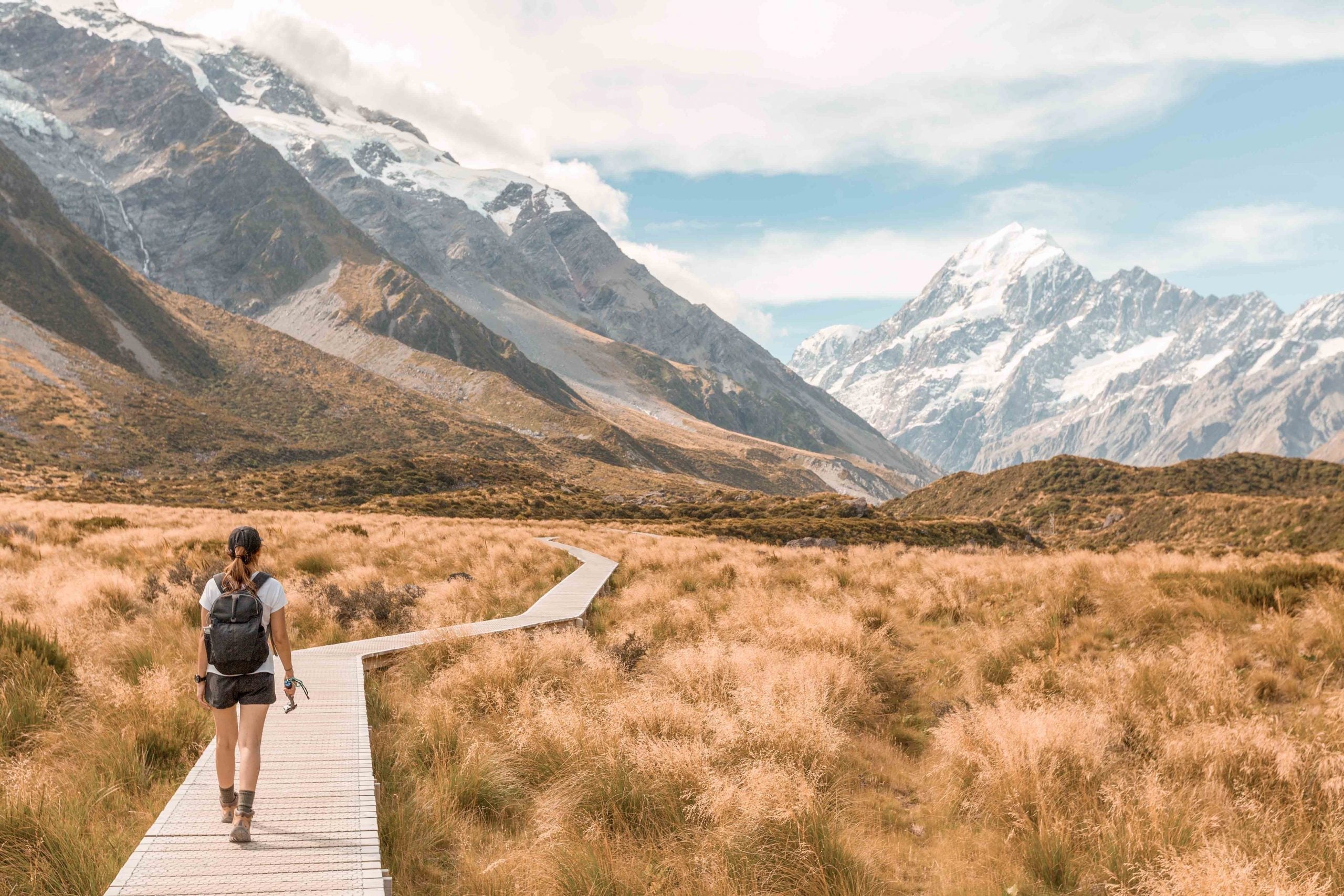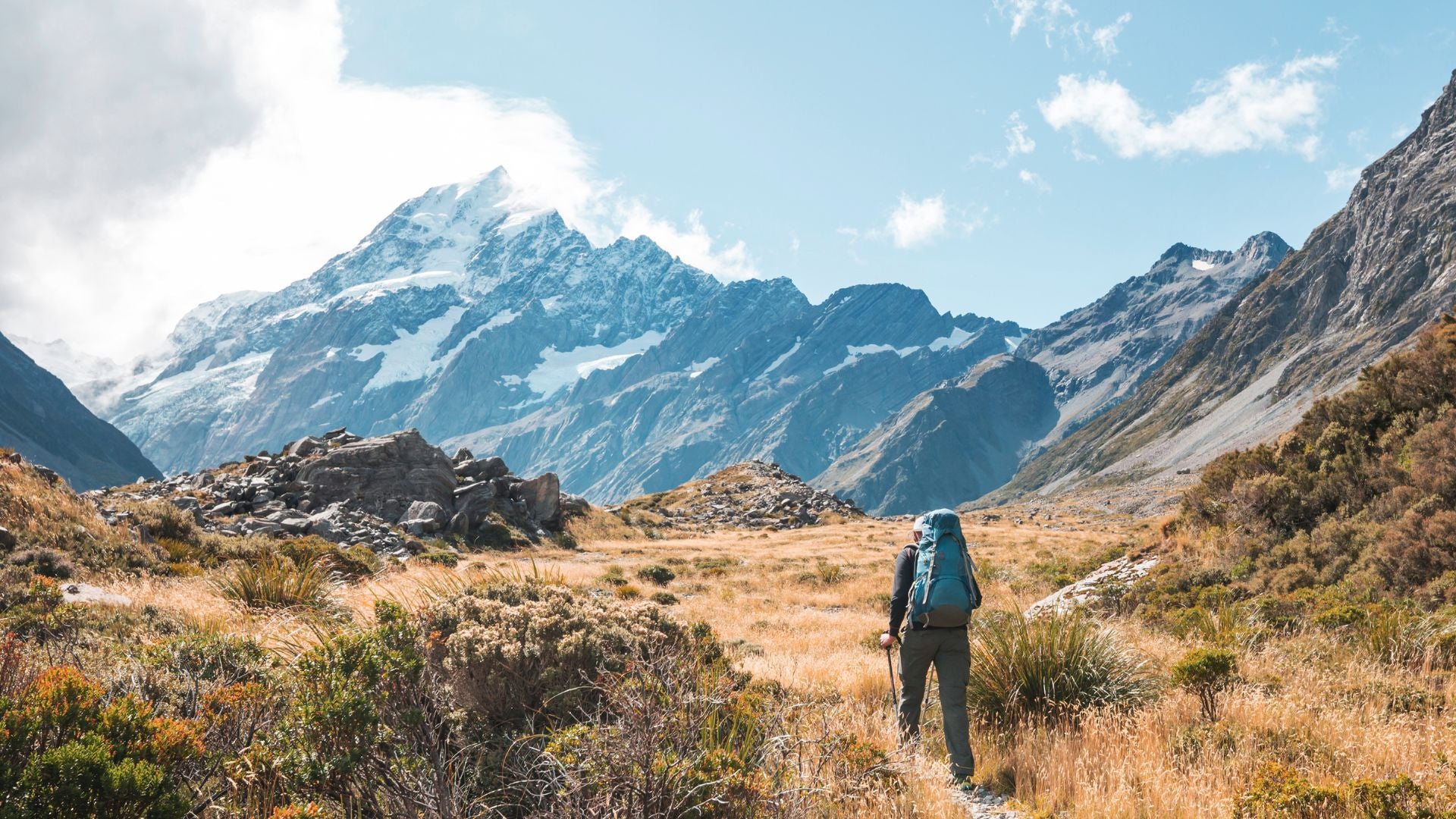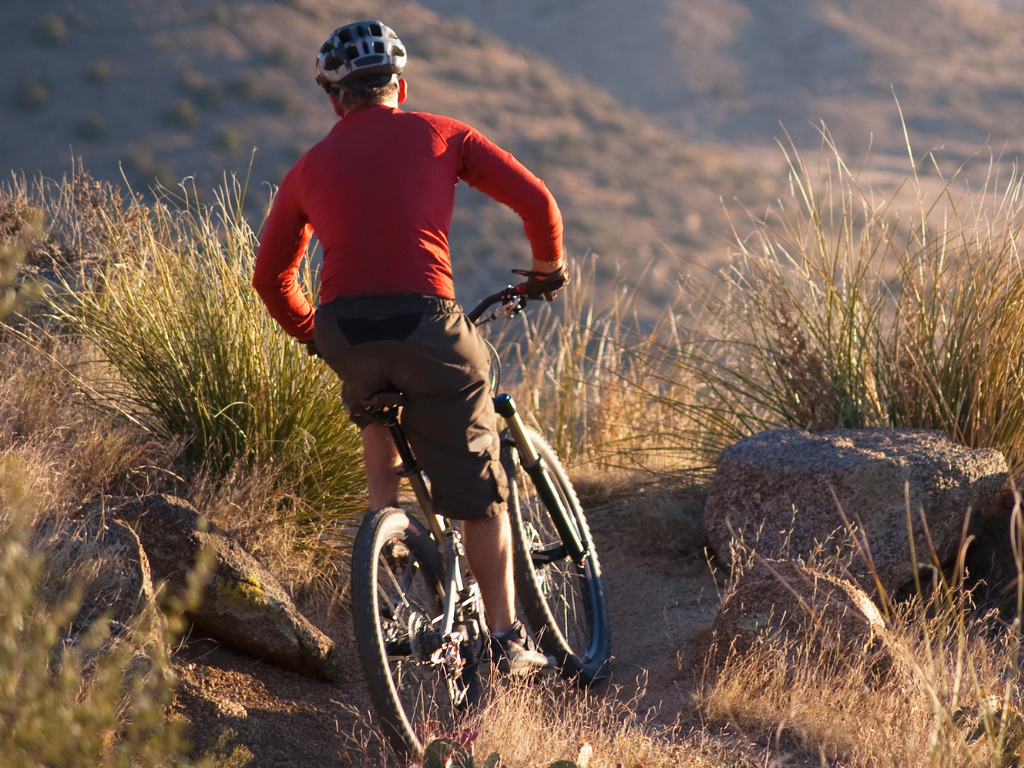Spring is a magical time to explore the breathtaking landscapes of New Zealand, particularly in the stunning Southern Lakes region. With wildflowers blooming and mild weather, it’s the perfect season for hiking. Here are some essential tips to help you make the most of your spring hiking experience.

Essential Tips for Spring Hiking in New Zealand
Choose the Right Trail
Select a trail that suits your fitness level and experience. Spring offers a fantastic opportunity to explore various hiking routes in the Southern Lakes region, ranging from easy walks to challenging hikes. As always, be sure to check trail conditions and weather forecasts before heading out, as spring weather can be unpredictable.
Short to Moderate Trails
Rob Roy Glacier Track (near Wanaka):
This 10-kilometer return hike takes you through lush beech forest to stunning views of the Rob Roy Glacier. The trail is well-maintained, and the scenery is breathtaking, making it a great choice for a spring outing. Read more about this track on the Department of Conservation website.
Rob Roy Glacier Track (near Wanaka)
Ben Lomond Track (near Queenstown):
A more challenging option, this 11-kilometer track offers panoramic views of Queenstown and Lake Wakatipu from the summit. Spring is ideal for this hike, as the wildflowers begin to bloom along the trail, adding a splash of color to your journey. Read more about this track on the Department of Conservation website.
Ben Lomond Track (near Queenstown)
Lake Tekapo Shoreline Walk (in Tekapo):
This easy, 3-kilometer walk follows the picturesque shoreline of Lake Tekapo. Enjoy the stunning turquoise waters and the backdrop of the Southern Alps while soaking in the spring sunshine.
Lake Tekapo Shoreline Walk (in Tekapo)
Queenstown Hill Time Walk (near Queenstown):
A moderate 2.5-hour hike that rewards you with spectacular views over Queenstown and the surrounding mountains. In spring, the trail is often adorned with beautiful blossoms, making it a delightful trek. Read more about it on the Queenstown NZ website.
Queenstown Hill Time Walk (near Queenstown)
Mount John Walkway (in Tekapo):
This 7-kilometer loop offers stunning views of Lake Tekapo and the surrounding landscapes. The relatively gentle climb is perfect for spring, allowing you to enjoy clear skies and vibrant wildflowers along the way. Read more about thius track on the Department of Conservation website.
Mount John Walkway (in Tekapo)
Longer Trails for Adventurers
Routeburn Track:
One of New Zealand’s Great Walks, this 32-kilometer track connects Fiordland and Mount Aspiring National Parks. Spring is a great time to experience this trail, where you'll encounter stunning alpine scenery, waterfalls, and diverse ecosystems. The hike can be completed in two to four days, depending on your pace and preferences. Read more about this track on the Department of Conservation website.
Routeburn Track
Milford Track:
Another of the Great Walks, the Milford Track is a 53.5-kilometer hike known for its breathtaking scenery and iconic locations like the Sutherland Falls. While this track typically requires three to four days, it's worth considering for a spring adventure. Be prepared for varying weather conditions and potential snow at higher elevations. Read more about this track on the Department of Conservation website.
Milford Track
Greenstone-Caples Track:
This four to five-day loop track connects to the Routeburn Track and offers an easy yet stunning hiking experience. Following the Greenstone and Caples rivers, the trail leads you through beautiful grassy flats, beech forests, and a spectacular gorge. With breathtaking mountain and river views, it's a truly special route. Historically, it served as a vital path for Māori traveling between the West Coast and Central Otago. You can start from the Greenstone Shelter, with three first-in-first-served huts available along the way. Bookings are required starting November 1st, 2024, and tickets must be purchased at the Queenstown Department of Conservation Visitor Centre. For this track you would require two maps, both the Topo CB09 and the Topo CB10. Read more about this track on the Department of Conservation website.
Greenstone-Caples Track
Dress for Success: The Layering System
Mastering the art of layering is key to staying comfortable during your spring hikes. This system allows you to adjust your clothing as the weather and your activity level change throughout the day.
Base Layer: Start with a lightweight, moisture-wicking layer next to your skin. Merino wool blends, such as those in Mons Royale and Icebreaker's ZoneKnit base layers, or synthetic fabrics like those used in Arc'teryx Rho styles, are excellent choices. These materials help regulate your body temperature and wick moisture away, keeping you dry as you warm up during your hike. Avoid cotton, as it retains moisture and can lead to discomfort.
Mid Layer: Your mid-layer should provide insulation without overheating. For spring temperatures, consider a lightweight fleece or a breathable synthetic jacket. The Patagonia R1 Fleece is a great option, offering excellent moisture-wicking properties while keeping you warm during cooler mornings and evenings. A lightweight down jacket, like the Arc'teryx Atom, can also be a versatile choice, easily packable when temperatures rise.
Outer Layer: Your outer layer should be lightweight, windproof, and water-resistant to protect against unexpected spring showers. Look for breathable materials like GORE-TEX® or similar fabrics to prevent overheating while keeping you dry. Jackets such as the Marmot Minimalist are excellent options, providing wind and water protection without the bulk.
Accessories: Accessories play a crucial role in your spring hiking outfit. A lightweight, breathable Buff neck warmer can protect against wind, while a wide-brimmed hat and sunglasses shield you from the sun. Waterproof gloves may still be necessary for chilly mornings, and breathable, moisture-wicking socks are essential for keeping your feet comfortable - we recommend DexShell's gloves and socks.
Footwear: Your Foundation for Spring Hiking
Boots or shoes: Choosing the right footwear is essential for a successful spring hiking experience. Opt for waterproof hiking footwear, ideally with breathable materials to allow moisture to escape while keeping your feet dry. A good fit is critical; ensure your boots or shoes have excellent grip and support. Mid-cut boots provide added ankle support, which can be beneficial on uneven terrain.
Socks: Invest in warm, moisture-wicking socks made of merino wool or synthetic blends. Merino wool regulates temperature and wicks moisture away, keeping your feet warm and dry. It also offers superior comfort, remaining soft and non-itchy, even during extended wear.
Gaiters: While not always necessary in spring, gaiters can help keep debris and moisture out of your boots, enhancing your comfort on the trail.
What to Bring
Packing the right gear is essential for a successful hiking experience. Here’s a checklist of must-have items:
Daypack: Your Essential Companion
A comfortable, lightweight daypack is essential for carrying your gear without weighing you down. Look for one with adjustable straps, a padded back, and ample storage compartments to keep your items organized. A daypack with hydration reservoir compatibility can be especially handy for easy access to water on the go.
Women's Daypack Recommendation
Osprey Women's Tempest 20 Pack:
Pros: Lightweight and comfortable, the Tempest 20 is designed specifically for women, offering an ergonomic fit that enhances stability and reduces fatigue. It includes an external hydration sleeve, plenty of pockets for organisation, and a breathable back panel to keep you cool.
Cons: Its 20 litre capacity may be limiting for longer hikes or trips that require more gear. Additionally, while the pack is durable, it may not withstand the same level of heavy-duty use as larger, more robust packs.
Men's Daypack Recommendation
Pros: The Talon 22 is versatile and suitable for various activities, from day hikes to bikepacking. It features a comfortable fit with an adjustable harness, a ventilated back panel, and multiple storage options, including stretch mesh pockets and a LidLock helmet attachment. Its design promotes good weight distribution, making it easy to carry heavier loads.
Cons: At 22 litres, it offers slightly more capacity than the Tempest 20 but might still be insufficient for extended trips. Some users may find the additional features add unnecessary weight for shorter hikes.
Unisex Large Hiking Bag Recommendation
Pros: With a 32 litre capacity, the Deuter Futura 32 is ideal for longer hikes and overnight trips. It features Deuter’s Aircomfort Sensic back system for excellent ventilation, a rain cover, and plenty of storage compartments, including a separate bottom compartment for a sleeping bag. The pack is also known for its durability and robust construction.
Cons: The larger size and increased capacity mean it’s heavier and bulkier, which might be overkill for shorter day hikes. Additionally, its comprehensive features come at a higher price point, which may not be necessary for all hikers.
Hydration: Stay Hydrated
Staying hydrated is crucial during your hike, especially in the warmer spring weather. Bring plenty of water, ideally at least 2 liters for a full day of hiking. A reusable water bottle, such as a Nalgene bottle, is a great choice, but a hydration system or bladder allows you to sip easily while on the move. Consider bringing electrolyte tablets or powder for longer hikes to replenish lost minerals.
Snacks: Fuel Your Adventure
Pack high-energy snacks to keep your energy levels up on the trail. Opt for lightweight, non-perishable options such as:
- Nuts and Seeds: Great sources of protein and healthy fats.
- Dried Fruits: Natural sugars provide a quick energy boost.
- Energy Bars: Look for options with whole ingredients that provide sustained energy. We particularly like Clif Energy Bars or Em's Power Bar.
- Nut Butter Packs: Convenient and full of protein to pair with apple slices or rice cakes.
- Freeze-Dried Meals: For longer hikes, consider bringing dehydrated meals, which are lightweight and require only hot water to prepare.
Navigation Tools: Stay on Track
First Aid Kit: Be Prepared
Accidents can happen, so carrying a basic first aid kit is always a good idea. Your kit should include:
- Adhesive bandages in various sizes
- Antiseptic wipes or cream
- Pain relievers (like ibuprofen or acetaminophen)
- Tweezers and scissors
- A blister treatment kit
- Any personal medications you may need
Outside Sports offers an ultralight ready-to-go first aid kit with everything you'd need.
Emergency Supplies: Safety First
Include essential emergency supplies in your pack, such as:
- Whistle: Useful for signaling for help if you get lost.
- Flashlight or Headlamp: Even if you plan to finish your hike before dark, it's wise to have a light source in case your hike takes longer than expected. Petzl and Black Diamond offer quality yet affordable options.
- Fire Starter: Waterproof matches, a lighter, or fire starter sticks can help you create a fire in an emergency situation. Kea provides an well-stocked fire starting pack with everything you need.
Conclusion: Embrace the Beauty of Spring Hiking
With its stunning landscapes, vibrant flora, and mild weather, spring in New Zealand is an ideal time to explore the great outdoors. By choosing the right trail, dressing appropriately, and packing the essential gear, you can ensure a safe and enjoyable hiking experience. So lace up your boots, grab your daypack, and embark on an adventure through the beautiful Southern Lakes region. Whether you're a seasoned hiker or a beginner, the trails await you with the promise of unforgettable memories in the breathtaking New Zealand wilderness.



